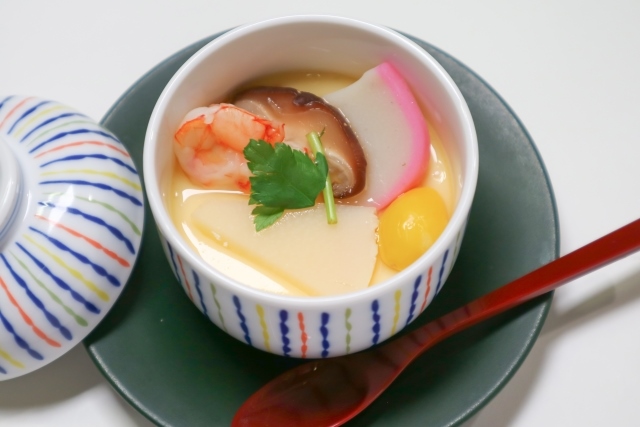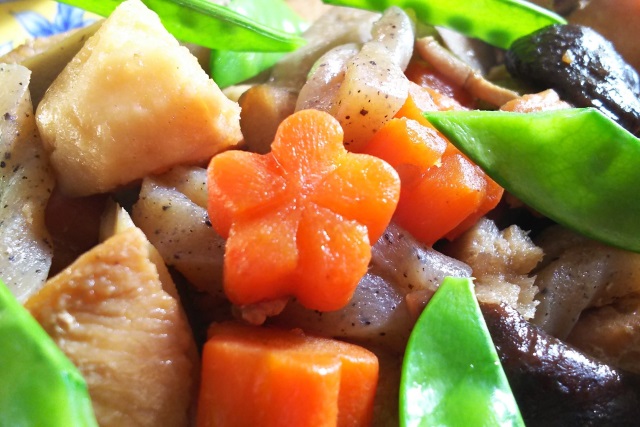Basic Information
Traditional Japanese home cooking values the natural flavors of ingredients and uses minimal oil. Common cooking methods include simmering, grilling, and steaming, primarily using soy sauce and seafood-based broth.
Kiriboshi Daikon
Kiriboshi Daikon is a dried food product made from thinly sliced radishes that have been dried. It is called Sengiri Daikon in western Japan and is made using radishes harvested from late autumn to winter.
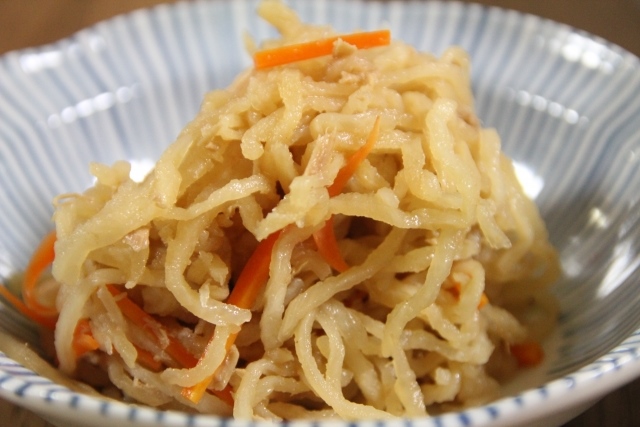
Chikuzenni
Chikuzenni is a traditional dish of Fukuoka Prefecture in the Kyushu region. Originally, the dish used softshell turtles, but now chicken is used instead. It’s a dish indispensable for New Year’s and celebrations in the local area.
All the ingredients are stir-fried, and chicken is added to a pot of boiled soy sauce, sweet sake, and sake, followed by ingredients such as carrots, lotus root, and burdock in order. After everything has been colored, add taro and simmer until the vegetables are tender and the liquid has evaporated to complete the dish.
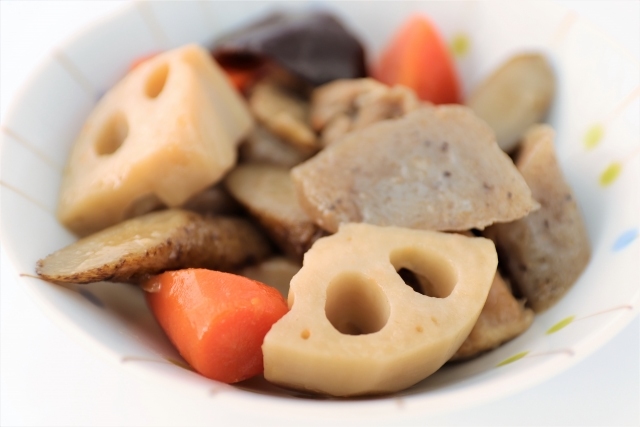
Agehitasi
Agehitasi is a dish where eggplant, among other ingredients, is fried in oil without boiling, rinsed with boiling water to remove the oil, and then soaked in a flavored broth. Bonito flakes are sometimes sprinkled on top of Agehitasi.
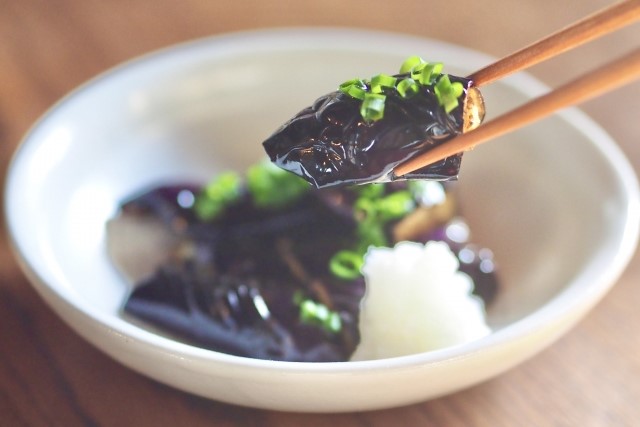
Hourensou Gomaae
Hourensou Gomaae is a flavorful dish that’s particularly delicious in cold weather. Boil spinach briefly in boiling water, chill in cold water, and drain thoroughly. It is finished by mixing ground sesame seeds, sugar, and soy sauce.
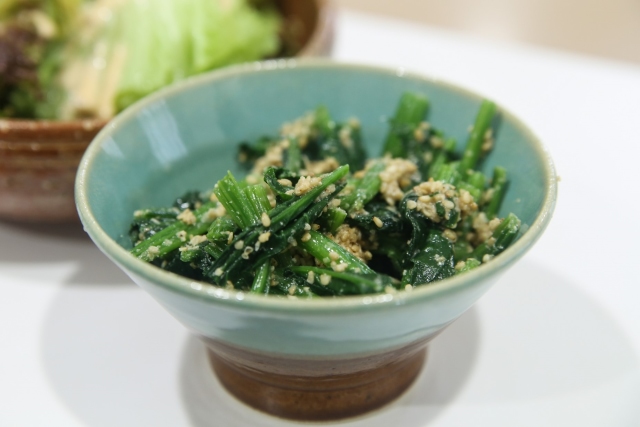
Renkonmanjyu
Renkonmanjyu is made primarily with lotus root, which is the underground stem of the lotus plant. The lotus root is grated and molded into a bun shape. Ingredients such as shrimp are sometimes mixed in and steamed to finish the dish.
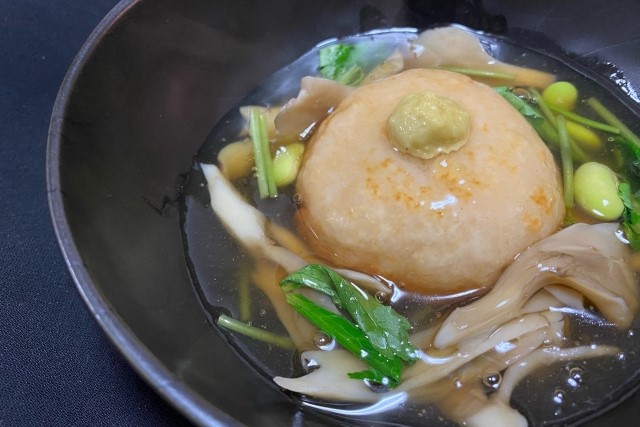
Chawanmushi
Chawanmushi is a traditional Japanese dish, prepared by placing ingredients such as chicken, shrimp, shiitake mushrooms, kamaboko (fish cake), and gingko nuts into a cylindrical teacup, then pouring in an egg mixture flavored with dashi (Japanese soup stock), and steaming it until set. It is said to originate from Nagasaki Prefecture in the Kyushu region of Japan.
